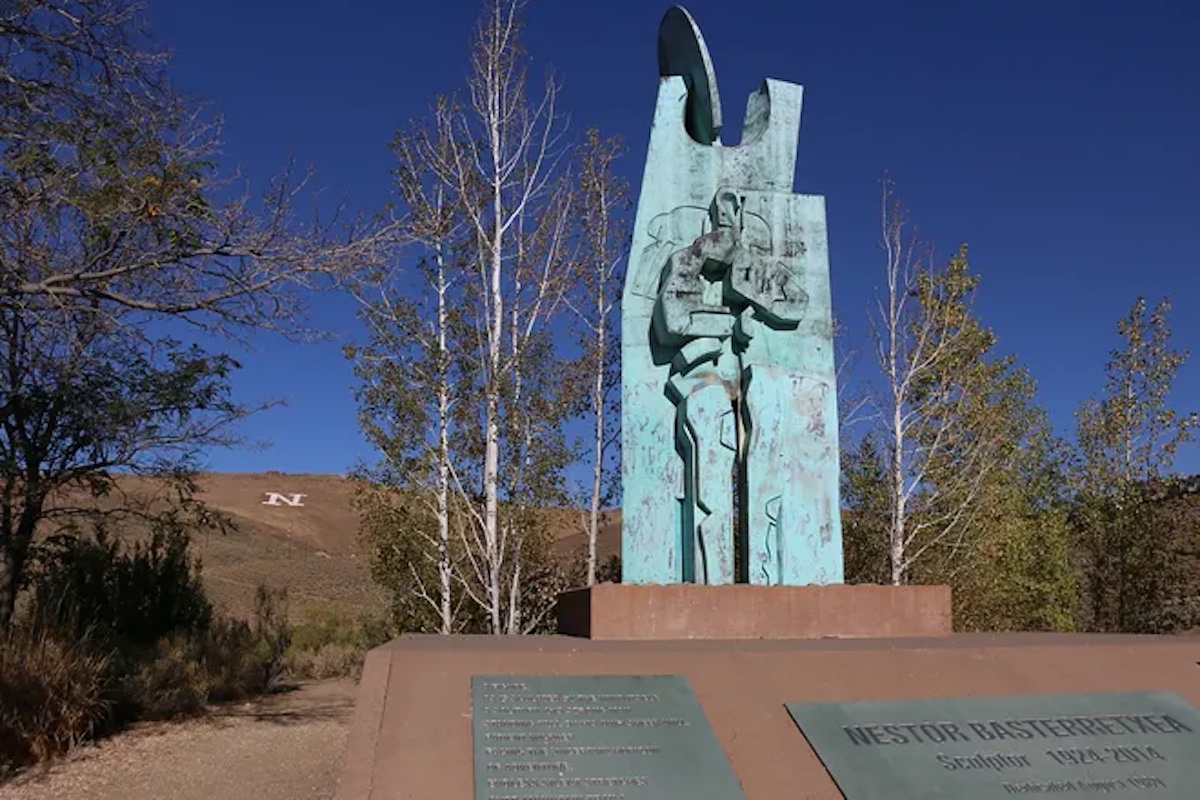At the beginning of the history of this blog, we brought you a story that had a great effect on us: the vandalism of the National Basque Sheepherder Monument inaugurated in 1989 in Rancho San Rafael Park in Reno, Nevada.
A while later, we were quite thrilled to write that this work by Nestor Basterretxea, which honors and commemorates the hundreds of Basques who traveled out West to care for great flocks of sheep all by themselves, had been restored.
These Basque sheepherders (a collection of articles about them can be found here) who crossed the huge expanses of that part of the world left behind not only their names engraved as arborglyphs in the quaking aspens that dominate the area, but also an active, committed, and energetic community that has become a model of what Basques in the world should be. Vince J. Juaristi mentioned this in his series on the Basques in the US:
The results are vivid among the 57,000 Basque in America today. According to the last census, more than 75% of Basque age 25 years or older have some level of college education compared to only 58% of Americans overall. They are 31% more likely to hold jobs in management, business, science or the arts. Their median household income is $70,159 compared to the U.S. median of $52,176. Their poverty rate is half the national average, and they are more likely to own their own home. When they do, the home is 48% more valuable than the average American home.
Additionally, Miles Corwin, in an article for the Los Angeles Times, the same year the monument was inaugurated, wrote that it was the end of an era: young Basque sheepherders no longer set off for California (see the article in the link below). Now, not only don’t they go to California, they don’t go to any other place in the US anymore, and their children and grandchildren have found work in other fields, as Juaristi wrote.
Now, the Reno Gazette-Journal has published an incredible article by Carmelo Urza, a professor at the University of Nevada, Reno, who was born in Erandio and who gives us all the keys to understanding the history, reasons, and symbolism behind this commemoration of the Basque compatriots who traveled across the globe to build a new life out west, and dedicated themselves to becoming “Basque sheepherders.”
In our articles about the Basques in the US, our readers can find a huge number of references to this part of Basque history, with stories as interesting as that of Johnson County, Wyoming (county seat at Buffalo), which decided to use the ikurriña as the base for its county flag, in recognition of the contributions the Basque had made to the growth of the county.
We’ll leave you with the article in the Reno Gazette-Journal about the National Basque Sheepherder Monument, and the Los Angeles Time article about the disappearance of the Basque sheepherder.
Reno Gazette Journal – 2023/04/11 – USA
The story behind the National Basque Monument at Rancho San Rafael Park
Inaugurated on Aug. 27, 1989, the huge green sculpture sits mute on the north side of McCarran by the baseball field. Who built it, and why? The homeland of the Basques is in the western nook of the Pyrenees, tucked between the modern countries of Spain and France. Numerous wars and its diminutive size led its people to emigrate far and wide. Starting in the late 19th century, Basque men travelled to the American West to herd sheep, work shunned by most Americans due to its isolation, challenges and low pay.
(Follow) (Automatic translation)
Los Angeles Times – 1989/04/16 – USA
End of a Tradition : Young Basque Shepherds No Longer Flock to Calif.
For more than 100 years they have been coming to California and herding sheep, working interminable hours, rarely taking days off, enduring months of isolation in tents or primitive trailers. It was a job few Americans wanted. But for the young men in the mountainous Basque regions of Spain and France, shepherding was a way to parlay a few years of hard work into a better life.
(Follow)
The LA Times website does not allow for automatic Google translation, so you have to copy and paste it into Google yourself.
Last Updated on Dec 3, 2023 by About Basque Country





























